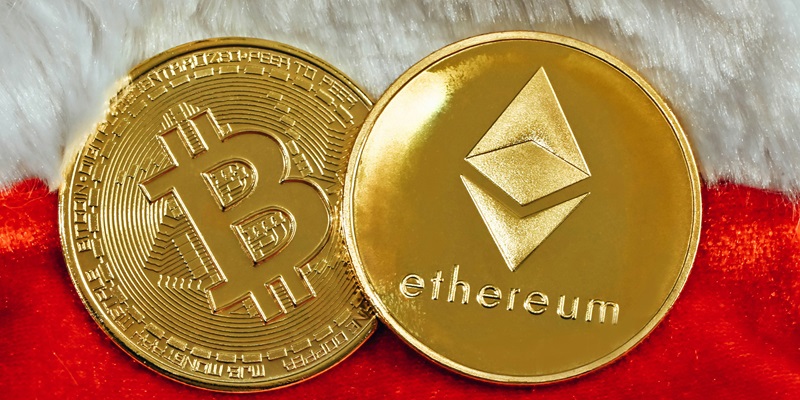The Tron (TRX) network has emerged as a formidable player in the rapidly evolving world of blockchain technology and decentralized finance (DeFi). What sets Tron apart from other major web3 chains such as Ethereum, Solana (SOL), Binance Smart Chain (BSC), and Polygon (MATIC) are its low transaction fees, robust security standards, and superior scalability. These factors have contributed to the network’s dramatic rise and growing popularity among developers and users.
Tron’s Competitive Advantages
Low Transaction Fees and Robust Security Standards
One of Tron’s most compelling features is its notably low transaction fees, which have become a significant point of attraction for many in the crypto community. As transaction fees continue to rise on other networks like Ethereum, Tron has capitalized on the opportunity to offer a more cost-effective solution. This is particularly beneficial for decentralized applications (dApps) that require multiple transactions, as the cost savings can be substantial over time.
Additionally, Tron’s robust security standards have instilled confidence among developers and users alike. Security is paramount in the blockchain space, and any perceived vulnerabilities can deter participation. Tron has managed to establish itself as a reliable and secure network, which has been crucial in gaining trust and expanding its user base. These low fees and robust security measures make Tron a compelling alternative to more established networks like Ethereum.
Scalability and High Activity Levels
In terms of scalability, Tron has demonstrated impressive performance metrics that rival, and in some cases surpass, those of its competitors. The network has successfully addressed the scalability issues that have plagued other blockchain platforms, allowing it to handle a higher volume of transactions more efficiently. This capability is evidenced by Tron’s 1.83 million active addresses recorded in a 24-hour period, significantly outperforming Ethereum’s 365,000 and Bitcoin’s 594,000 active addresses.
Tron’s ability to maintain high levels of activity without compromising on transaction speed or security is a testament to its technological prowess. The network’s architecture has been designed to support continuous growth and high transaction volumes, positioning it as a scalable and reliable option for both developers and users. These scalability advantages have been instrumental in Tron’s rapid adoption and increasing market presence.
Tron’s Role in the Stablecoin Market
Major Minting Chain for Tether’s USDT
A key driver of Tron’s growth has been its role as a major minting chain for Tether’s USDT. With a stablecoin market cap of approximately $58 billion, Tron has established itself as a significant player in the stablecoin market. The network’s ability to support high-volume stablecoin transactions has made it an attractive platform for both issuers and users seeking stability and liquidity.
This strong presence in the stablecoin market is further evidenced by Tron’s total value locked (TVL) of around $7.25 billion, making it the second-largest after Ethereum. Platforms like JustLend, which boasts a TVL of $5.37 billion, along with other notable projects such as JustStables CDP, SUN DEX, stUSDT RWA, and JustMoney DEX, underpin Tron’s thriving DeFi ecosystem. These platforms not only enhance liquidity but also provide various financial services, contributing to the overall strength and versatility of the Tron network.
Facilitation of On-Chain Transactions and Account Support
Tron’s effectiveness in facilitating on-chain transactions is illustrated by the impressive total of 7.9 billion transactions it has processed. This incredible volume of transactions reflects the network’s capability to handle large-scale operations seamlessly. Moreover, Tron supports over 242 million accounts, showcasing its broad user base and widespread adoption.
The network’s infrastructure and technological capabilities have enabled it to scale efficiently, supporting a high number of transactions and accounts without experiencing significant performance issues. This scalability and reliability are crucial for maintaining user satisfaction and encouraging further adoption. By enabling efficient and secure transactions, Tron has solidified its position as a robust and dependable network in the blockchain space.
Market Impact and Future Prospects
Price Volatility and Recent Gains
In terms of market impact, TRX has experienced its share of volatility but has shown considerable resilience and growth potential. Over the past four weeks, TRX has gained approximately 10%, indicating a strong positive trend. The coin’s price action against the US dollar has been testing the resistance level around $0.126 for the past four months, suggesting a critical juncture for its market performance.
If buyers manage to flip this resistance level into support, TRX could potentially reach its all-time high of $0.17. This price movement would mark a significant milestone for Tron, further boosting investor confidence and attracting more participants to the network. The potential for TRX to break new ground in terms of price highlights the growing interest and optimism surrounding the Tron network.
Strategic Importance in the Crypto Ecosystem
The Tron (TRX) network has established itself as a significant force in the swiftly advancing landscape of blockchain technology and decentralized finance. Distinctive features elevate Tron above other prominent web3 networks like Ethereum, Solana (SOL), Binance Smart Chain (BSC), and Polygon (MATIC). For instance, Tron offers remarkably low transaction fees, maintaining an efficiency that attracts developers and users alike. Moreover, its security protocols are among the most stringent in the industry, and its scalability surpasses that of many competitors, allowing for a higher volume of transactions without compromising speed or performance. These attributes have substantially fuelled Tron’s rapid growth and increasing favourability among the blockchain community, making it a go-to platform for developing and deploying decentralized applications (dApps). As the blockchain arena continues to expand, Tron’s unique advantages position it as a leader, drawing more attention from both developers aiming to build innovative solutions and users seeking efficient, low-cost transaction capabilities.

